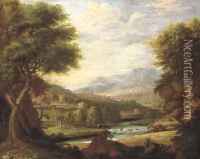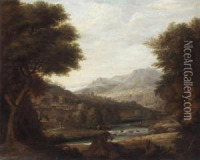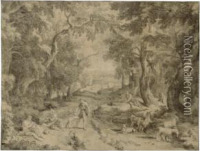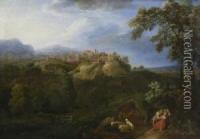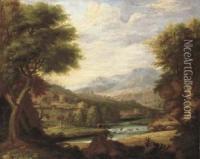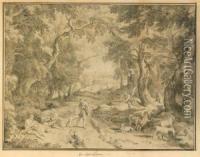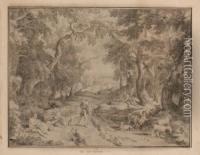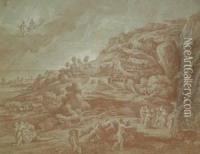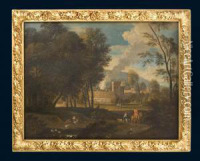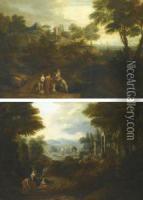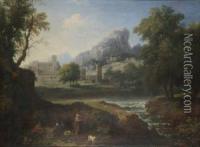Jan Joost Von Cossiau Paintings
Jan Joost van Cossiau, born in 1660 in Büttelborn, near Darmstadt, Germany, was a distinguished landscape painter known for his idyllic and pastoral scenes. His work is part of the Baroque period, a time characterized by dramatic expression, detail, and deep color, yet his landscapes often conveyed a serene and harmonious quality that was less tumultuous than the typical Baroque style.
Cossiau's early life is not extensively documented, but it is known that he embarked on his artistic journey in Germany before moving to the Southern Netherlands, which is present-day Belgium. This move was pivotal for his career as he became exposed to the Flemish school of painting, which greatly influenced his technique and thematic choices.
He was particularly admired for his ability to depict light and atmosphere, creating scenes that were not only beautiful but also rich in mood and emotion. His landscapes often featured classical ruins or pastoral figures, imbued with a sense of tranquility and timeless beauty. Cossiau's skill in painting was complemented by his ability to integrate these elements seamlessly, creating cohesive and captivating scenes.
Throughout his career, Jan Joost van Cossiau gained recognition and patronage from various European nobles and art collectors. His works were particularly sought after in Germany and the Netherlands, where he contributed to the popularity of landscape painting as a genre.
Despite his success, detailed records of his life and works are somewhat sparse, and many of his paintings are now attributed to him based on stylistic analysis rather than documented history. Nevertheless, his contribution to the art of landscape painting during the Baroque period remains significant. His ability to capture the beauty and tranquility of nature continues to be appreciated by art historians and collectors alike.
Jan Joost van Cossiau passed away in 1732. Though he may not be as widely known as some of his contemporaries, his work offers a unique window into the pastoral and idyllic visions of the Baroque era, reflecting both the beauty of the natural world and the artistic movements that shaped European art history.
